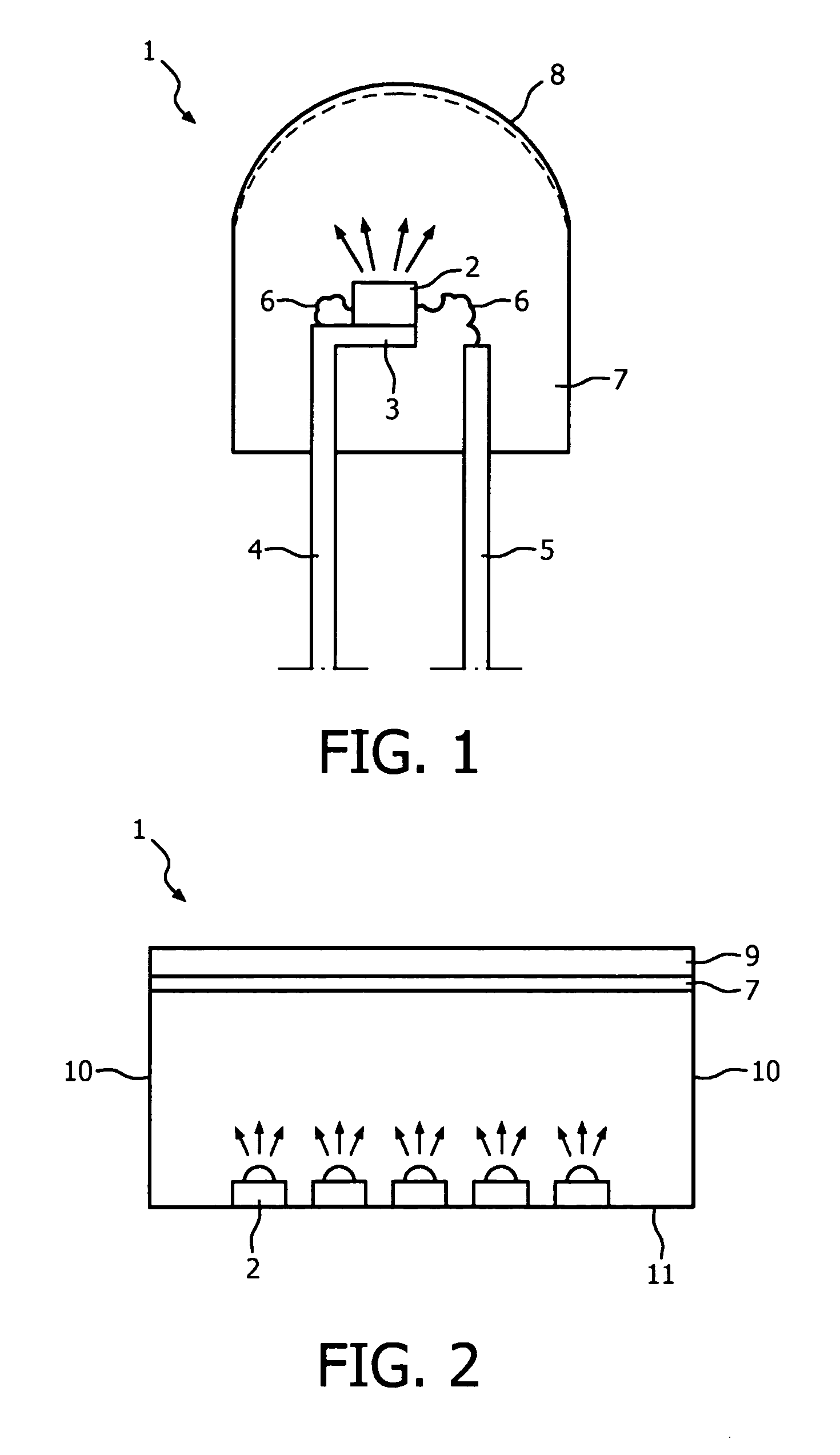Lighting device with light source and wavelength converting element
- Summary
- Abstract
- Description
- Claims
- Application Information
AI Technical Summary
Benefits of technology
Problems solved by technology
Method used
Image
Examples
first embodiment
[0023]FIG. 1 illustrates in cross-section the lighting device 1 according to the present invention. Said lighting device 1 comprises a light source 2, which is embodied as a light emitting diode (LED). Although different types of LED can be used, it is preferred to apply a LED which is able to emit light having a wavelength of 500 nm or less. In the present device a LED of the GaInN type is used, which is able to emit light having a wavelength maximum of 450 nm. Said light source 2 is positioned on a part 3 of a power lead 4, which, together with a further power lead 5, arranges for electrical current that causes the LED to emit radiation. This radiation is indicated by the arrows that point away from the LED. The power leads 4, 5 include thin conducting wires 6 which are directly connected to the LED.
[0024]Light source 2 is encapsulated in a wavelength converting element 7, which has the shape of an optical lens. Converting element 7 is mainly composed of an organic polymer. A phos...
second embodiment
[0028]FIG. 2 illustrates in cross-section the lighting device 1 according to the present invention. Device 1 comprises a plurality of light sources 2 (again embodied as LEDs), of which only five are shown in cross-section. These LEDs may emit radiation of the same or of different wavelength. The direction of the radiation is indicated by small arrows. Upon activation of the light sources 2 via power leads and / or connection wires (not shown), the emitted light leaves the lighting device 1 via converting element 7, which is here formed as a plate. During passage of the plate-shaped converting element 7, (part of) the incident radiation is converted to radiation having a different wavelength. In the present device, said optical plate is attached to a substrate 9 which is transparent to the (converted) radiation. The side-walls 10 and the bottom-wall 11 are provided with reflecting means, so that a large portion of the generated radiation leaves the lighting device 1 via the wavelength ...
PUM
 Login to View More
Login to View More Abstract
Description
Claims
Application Information
 Login to View More
Login to View More - R&D
- Intellectual Property
- Life Sciences
- Materials
- Tech Scout
- Unparalleled Data Quality
- Higher Quality Content
- 60% Fewer Hallucinations
Browse by: Latest US Patents, China's latest patents, Technical Efficacy Thesaurus, Application Domain, Technology Topic, Popular Technical Reports.
© 2025 PatSnap. All rights reserved.Legal|Privacy policy|Modern Slavery Act Transparency Statement|Sitemap|About US| Contact US: help@patsnap.com


